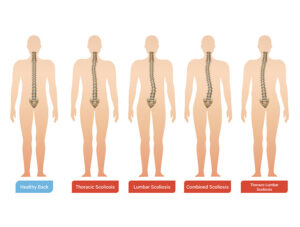A spinal tumour occurs as a result of uncontrollable growth and multiplication of cells forming an abnormal mass of tissue within the spinal cord. They are of two types: primary and secondary. Primary tumours may begin within the elements of spine including the spinal column, spinal discs, spinal nerves, etc. Secondary spinal tumours are tumours which have developed in other parts of the body and spread to the spinal cord. They are classified into different types based on their location and specific region within the spine.
Types of Spinal Tumours
The three different types of spinal tumours based on their specific region within the spine include:
- Intramedullary spine tumours: These tumours develop from the giant cells inside the interstitium of the spinal cord. The most common types in this region are Astrocytomas and Ependymomas. Astrocytomas are most commonly seen in the thoracic and cervical region, and ependymomas are seen in the cervical region and lower end of the spinal cord.
- Extradural spine tumours: These tumours develop outside the thin covering around the spinal cord, known as the dura. Sometimes they may extend beyond the dura, lying partly inside the spinal cord and partly outside.
- Intradural-extramedullary spine tumours: These tumours lie within the thin covering around the spinal cord, but not inside the actual spinal cord. The most common types in this region are meningiomas, schwannomas, neurofibromas, and filum terminale ependymomas.
Causes and risk factors of Spinal Tumours
Although the causes of majority of the spinal tumours are unclear, some associated factors include:
- Immunocompromised patients
- Exposure to carcinogens
- Genetic predisposition
- Existing genetic diseases (Neurofibromatosis 2 and Von Hippel-Lindau disease).
A few common cancers through which secondary spinal tumours occur are breast cancer, lung cancer, kidney cancer, thyroid cancer, prostate cancer.
Signs and symptoms of Spinal Tumours
The symptoms of spinal tumours may vary according to the type of tumour and the spinal region. However, some general symptoms of spinal tumours include:
- Back pain in the lower or mid spinal region
- Increasing pain with physical activity
- Pain that worsens at night time
- Radiating pain to the arms, legs, feet and hips
- Weakness of legs and arms
- Reduced sensitivity to heat, cold and pain
- Stiffness of the neck and back
- Weakness of muscles
- Walking difficulties
- Loss of bladder or bowel function
- Compression of nerves may lead to paralysis.
Diagnosis of Spinal Tumours
Spinal tumours are diagnosed based on thorough medical history, physical examination and diagnostic imaging scans focusing on pain and neurological aspects.
Physical examinations are carried out to evaluate pain intensity, location, sensations, reflexes and triggering factors.
Diagnostic imaging scans: Plain radiographic evaluation of suspected region of spinal tumours is considered along with a CT scan and MRI. MRI is considered as an exceptional diagnostic tool for spinal tumours. Most importantly, it helps in examining the spinal canal and the nerve involvement in the tumour.
Treatment of Spinal Tumours
Treatment of spinal tumours is decided based on the type, stage and severity of the tumour. These include two methods: Non-surgical and Surgical.
Non-surgical management: It includes chemotherapy, radiotherapy and observation.
Radiotherapy uses highly targeted radiation beams to destroy tumour cells and reduce the size of the tumour.
Chemotherapy is a procedure which uses drugs to kill tumour cells. These drugs help to control the rapid growth and multiplication of cancer cells.
Observation through regular monitoring with MRIs can be done in mild, asymptomatic, non-progressing tumours.
Some tumours may show a good response to these therapies, however there may be some secondary, metastatic tumours which are resistant to radiotherapy and chemotherapy. These patients would be considered for surgical treatment approaches.
Surgical management: The surgical goals include removal of the tumour for reduction of pain, preservation of nerve function and spine stabilization. The type of surgery and approach is decided based on age, location of the tumour, type of tumour (benign or malignant) progression and associated conditions.








